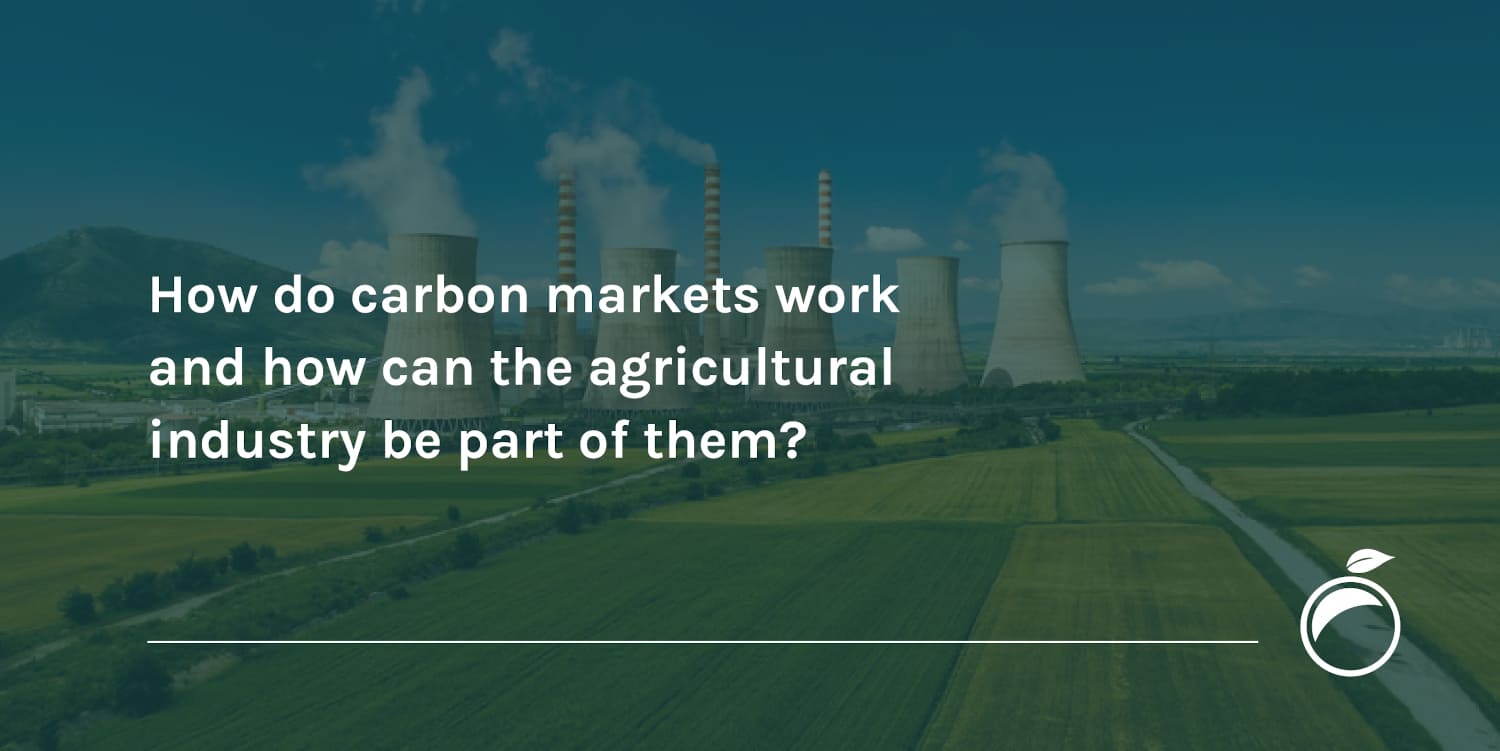
How Do Carbon Markets Work and How Can the Agricultural Industry Be Part of Them?
Eco-consciousness is currently reaching unprecedented levels globally, which in turn is driving important changes in the way in which many industries operate, including agriculture, which has finally begun to establish social and environmental commitments.
One of these commitments is the reduction of greenhouse gases, which significantly impact on climate change. Agriculture is one of the industries that is suffering the most from this issue, as the erratic and extreme weather events impact agricultural yields more and more.
However, most primary and secondary industries have a limited margin to reduce their greenhouse gas emissions, given that their activities involve the use of fossil fuels in a certain way, which is why carbon offsets have emerged as a solution.
But what are carbon offsets?
Carbon offsets, also known as carbon credits, are an international mechanism to encourage the reduction of polluting emissions into the atmosphere. They are one of the three mechanisms proposed in the Kyoto Protocol (2005) to reduce greenhouse gas emissions.
In general terms, with carbon offsets, the right to emit CO2 into the atmosphere becomes an exchangeable good with an established market price. In this way, companies that generate fewer emissions will benefit, as they will be able to sell their carbon credits in a market, where companies unable to reduce their emissions will have to buy carbon offsets in order to do so.
To fully understand this concept, it is necessary to mention that each carbon offset represents the right to emit one ton of CO2, which is measured in CO2 equivalent and translated into Certified Emission Reductions (CER), each one representing one ton of CO2 that is no longer emitted into the atmosphere.
How does a carbon market work?
The purpose of carbon credits is to compensate for excessive polluting emissions from primary and industrial activities, since all human activity generates these emissions, either directly or indirectly.
Although actions can be implemented to reduce these emissions, there are activities in which this is not possible, so carbon credits represent a way to compensate them through projects carried out by other companies and organizations.
In this sense, carbon credits are traded in carbon markets, which operate in a similar way to any other market: with buyers and sellers. The world’s leading carbon market is the European Union Emissions Trading System (EU ETS).
Sellers must guarantee that actions (implementation of renewable energies, reforestation and sustainable forest management programs, carbon capture technologies, increased energy efficiency, etc.) are in place to support the offsets they are selling, while buyers must guarantee payment for those offsets.
Let’s see an example of this in agriculture
Think of an agribusiness, which must regularly carry out land preparation, which requires heavy machinery that uses diesel fuel. The combustion of diesel results in the emission of greenhouse gases, but the company cannot stop doing this activity because it is indispensable for its operation.
However, the company may implement a reforestation program to compensate for the emissions it generates. But, as this would take time and resources, they decide to pay an external organization to reforest for them.
This is the basic principle behind carbon markets: companies pay other companies or organizations to carry out activities that offset their carbon footprint, thus seeking to drive a green market, where the companies that pollute the most are the ones that must drive more carbon offsetting initiatives.
Carbon assets for the agricultural industry?
Global agriculture emits 30% of greenhouse gases into the atmosphere, as the activities involved in the production and marketing of food cannot reduce its carbon footprint so easily, therefore, it will be a decades-long process, which is why carbon offsets are a great alternative.
Currently in Mexico there is already a voluntary carbon market for the forestry sector, and even in the United States crops like wheat and soybeans are already within a carbon market; however, there is still no market in which perishable fresh produce, fruit and vegetables, can be included.
At ProducePay we are aware of this need, and that is why we have launched the Industry-First Carbon Offset Program for Produce Growers in association with ALLCOT. This program will promote sustainable agricultural practices and will eventually allow farmers to trade carbon offsets in the international market.
Sustainability is the way forward
At ProducePay, we know that the future of agriculture must be sustainable, so our partnership with ALLCOT, a leader in the development of greenhouse gas emissions management tools and strategies, is the first step in our Sustainably SourcedTM initiative, which will become the world’s first sustainability standard for the fresh produce supply chain.
Through our Carbon Offset Program, we aim to support small and medium-sized growers in acquiring the infrastructure and adopting the sustainable practices necessary to meet the highest international carbon reduction standards. As a result, not only production and marketing activities of producers will be covered, but they will also be able to earn extra income through the sale of carbon offsets on the global market.
Of course, we know that to achieve this goal we will require a strong strategy and big effort, as we are leading the way in this regard, and we are very proud to be pioneers.

